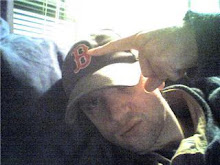
Gore? Check. Bad one-liners? Check. Eye-gouging scene? Check. I smell spaghetti! Oh wait, it’s just another American-made Italian horror film from the late 1980s direct-to-video era. But at a glance you wouldn’t know it. This one was written by the notorious Umberto Lenzi, under the pen name Harry Kirkpatrick. This may explain the constant stream of bizarre one-liners such as “It smells like a pair of sewers in here!” and “It’s sort of like eating a lot if you don’t have a colon. You never know how it’s gonna come out.”
These Italian horror guys have more aliases than the FBI’s 10 Most Wanted. They had a solid reputation for making shaky movies in the 1980s, so they used pseudonyms constantly. Bruno Matthei once commented he prefers his alias of Vincent Dawn to his own real name. This clearly shows the bizarre taste Europeans have. Who wouldn’t want to be named Bruno! That would be awesome! It’s not like he’s named Pupi Avati, director of the odd zombie film Zeder (1983).
Nowadays, anything and everything Italian horror is a collector’s item, and to many including myself, the name Umberto Lenzi spells must-watch. The man who made Cannibal Ferox (1981) The Man From Deep River (1972), Eaten Alive (1980), and Nightmare City (1980) is a real crowd pleaser.
The story starts with Frank Duffy, a school newspaper journalist, who looks like a cross between Tim Mattheson and MCA from the Beastie Boys. He gets a bite from a monkey infected with the primal rage virus, and the wound soon turns into a pulsating, bloody puss oozing sore. He runs around acting very much like the wild ape he was bitten by, exploding into violent fits of rage. Those bitten by him behave in a similar manner. When they attack, their bloodthirsty frenzy is accompanied by pounding rock music reminiscent of Demons (1985). The score by Claudio Simonetti of the Italian rock band Goblin, bears a striking resemblance to the first few bars of the theme from Dawn of the Dead. Many of the cast were reused from Lenzi’s entertaining attempt at an American slasher film, Welcome To Spring Break (1988).
The film starts out looking like another killer-animal-on-campus movie, like Shakma or Gnaw: Food of the Gods part 2, but winds up being a bit of a zombie movie.
Highlights include a fat man dressed in a baby costume getting his scalp torn off, three racquetball jocks turning on a strobe light and heavy metal music before they attempt to gange rape a co-ed, and a guy in a Dracula costume getting his throat torn out. The climax takes place during a Halloween ball and the costumes must be seen to be believed. The late-80s pop-rock band plays on as a guy gets hanged on a basketball court, and a guy in a commando costume casually gets the flesh torn off his hand. But nevermind all that, I want to know who thought up the Halloween costumes. Who the hell dresses up as a three-headed baby with faucets on its noses? I don’t want to give away too much here, but this scene sports some of the best costume party deaths this side of Terror Train (1980). I actually had to watch it twice because I kept on having to stop and write this review.
The point? There really isn’t one. The purpose of the scientific experiments that created the virus is never explained. Not that it matters. The moral of the story: When someone or something bites you, go to the doctor.
Sadly, Primal Rage is only available on DVD in Italy, and only on VHS in the United States. Used copies are still pretty cheap on Amazon, and I found mine at Video Review. This is one of those films that could disappear into obscurity at some point. I wasn't even able to find decent cover art scans to post, and as far as I can tell, you have just read the longest review of this film ever posted to the internet.








